Tactical missile system 9K52 "Luna-M"
A decree of the USSR Council of Ministers on the development of a promising missile system, which is a further development of the existing systems, was issued in mid-March 1961. The development of the project as a whole was entrusted to NII-1 (now the Moscow Institute of Thermal Engineering), who had experience in creating tactical missile systems. The technical assignment stipulated the development of a single-stage ballistic missile without control systems capable of hitting targets at ranges up to 65 km. It was necessary to take into account the possibility of using combat units of several types. Also it was necessary to develop two versions of the self-propelled launcher with different types of chassis and, as a consequence, different characteristics.
The main objective of the project, which received the designation "Luna-M", was to increase the basic tactical and technical characteristics in comparison with the existing technology. In addition, it was proposed by some means or other to improve the operational characteristics of the complex, as well as to reduce its composition. Thus, the 9P113 wheeled self-propelled launcher was proposed to be equipped with its own crane for working with missiles. This made it possible not to include in the rocket complex a transport-charging vehicle or a self-propelled crane, having managed only by relatively simple transporters. Some other ideas and solutions aimed at improving the general characteristics were also proposed.
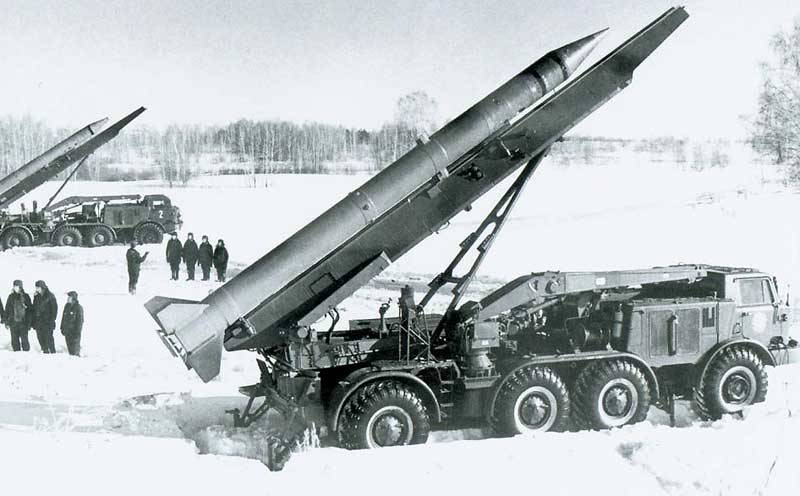
Preparing complex 9K52 "Luna-M" to launch a rocket. Photo Rbase.new-factoria.ru
During the design work, employees of several organizations of the defense industry developed several variants of the launcher at once. However, not all of them reached the serial production and operation in the army. Initially, self-propelled units were created on a wheeled and tracked chassis, and later more ambitious proposals appeared, such as a lightweight system suitable for transportation aviation.
Through the efforts of several enterprises responsible for the supply of certain units, a self-propelled launcher 9P113 was developed. The basis for this machine was the four-wheeled chassis ZIL-135LM. The chassis had a 8 x8 wheel formula with steered front and rear wheels. Used two engines ZIL-357Я power 180 hp The car had two sets of transmissions, each of which was responsible for transmitting engine torque to the wheels of its side. There was an independent torsion bar suspension with additional hydraulic shock absorbers on the front and rear axles. With its own mass 10,5 t chassis ZIL-135LM could carry 10-ton cargo.
A set of special units was mounted on the chassis cargo area. Provision was made for mounting the launcher, crane, etc. In addition, a stabilization system was developed in the form of four screw jacks. A pair of such devices was placed behind the front wheels, two more - on the back of the car. Due to the limited sector of horizontal guidance, the crew cabin received windshield protection.
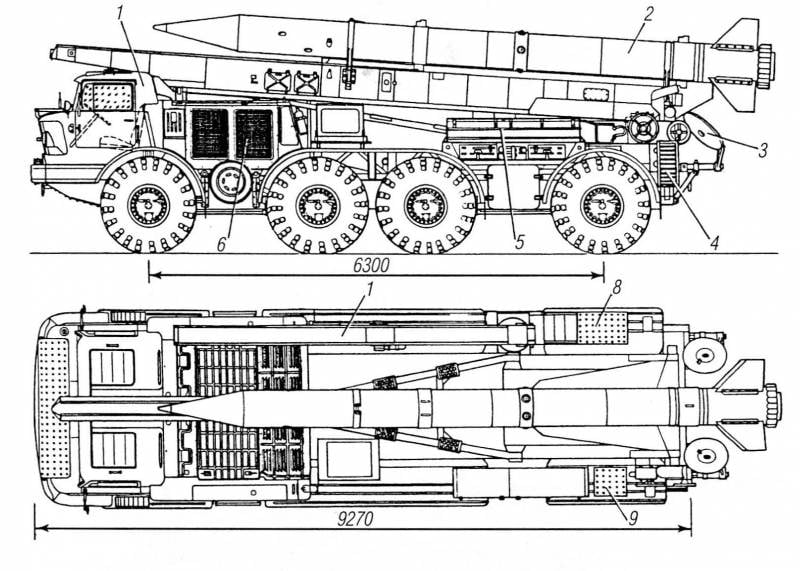
Scheme self-propelled launcher 9P113. 1 - crew cabin; 2 - rocket; 3 - jack; 4 - ladder; 5 - box with equipment; 6 - engine compartment; 7 - crane boom; 8 - platform for calculation when loading a rocket; 9 is a platform for calculating on hover. Figure Shirokorad AB "Domestic mortars and rocket artillery"
Above the rear axle of the chassis, it was proposed to mount a slewing support device for the rocket. It was made in the form of a platform with the ability to rotate in a horizontal plane at a small angle. On the platform, a swinging unit was hinged, the main part of which was the beam guide for the rocket. The length of the guide was 9,97 m. It was possible to rotate in the horizontal plane by 7 ° to the right and left of the neutral position. The vertical pointing angle varied from + 15 ° to + 65 °.
On the right side of the chassis, behind the third axle of the chassis, was placed the turntable of a crane. Even at the stage of preliminary study of the appearance of the missile complex, it was proposed to abandon the use of the transport-charging vehicle in favor of a simpler transport one. In accordance with this proposal, the loading of the missiles on the launcher was to be carried out by the own crane of the combat vehicle. Because of this, the 9P113 machine received a crane with hydraulic actuators. The load capacity of this device reached 2,6 t. Control was exercised from the console located next to the crane itself.
The length of the self-propelled launcher 9P113 was 10,7 m, width - 2,8 m, height with a rocket - 3,35 m. The own weight of the machine was 14,89 kg. After loading the launcher, this parameter increased to 17,56 T. The wheeled combat vehicle could reach speeds of up to 60 km / h on the highway. On rough terrain, the maximum speed was limited to 40 km / h. Power reserve - 650 km. An important feature of the wheel chassis was the softness of the course. Unlike tracked vehicles of previous missile systems, 9P113 did not create excessive overloads that affected the rocket being transported and limited the speed of travel. Among other things, it allowed in practice to realize all the possibilities associated with the characteristics of mobility.
As in previous projects, ballistic missiles should not have control systems. For this reason, the self-propelled launcher received a set of equipment necessary to perform the crosstalk. With the help of onboard equipment, the crew had to determine its own location, as well as calculate the pointing angles of the launcher. Most of the operations to prepare the machine for shooting was carried out using the remote.
To manage the machine 9P113 was a crew of five. On the march the crew was in the cockpit, in preparation for shooting or reloading the launcher - in their workplaces. Preparing for launch after arriving at the firing position required 10 minutes. Overloading the rocket from the transport vehicle to the launcher required an 1 hour.
Until a certain time, the possibility of creating a self-propelled launcher based on a caterpillar chassis for the 9K52 Luna-M complex was considered. A similar machine, which received the designation Br-237 and 9P112, was developed by the Volgograd plant "Barricades". The project provided for the use of a chassis borrowed from a floating tank PT-76 and recycled accordingly. At the site of the combat and engine compartment of the tank, it was proposed to place a roof of low height, on which the systems for mounting the launcher were located. The design of the latter was similar to that used in the project 9P113. The development of the tracked combat vehicle project continued until 1964. After that, the prototype was tested at the training ground, where it could not show noticeable advantages over alternative developments. As a result, work on the Br-237 / 9P112 was curtailed due to the lack of prospects.
Another interesting carrier of Luna-M rockets was supposed to be the 9PXNNXX light machine. This project proposed to use a light biaxial chassis with a set of necessary equipment. Such architecture of the launcher allowed the 114P9 object to be transported by existing types of helicopters. Due to significant differences from the base system, the complex based on the 114P9 launcher received its own designation 114K9 "Luna-MV". In the future, this system even managed to reach trial operation.
To collaborate with 9P113, the 9Т29 transport vehicle was developed. It was based on the chassis ZIL-135LM and had a fairly simple equipment necessary to perform its main task. On the cargo platform of the chassis there was a farm with bindings for the transport of three missiles with mounted warheads. The missiles were located on the bindings openly, but if necessary, could be closed with an awning. Due to the presence of a crane on a machine with a launcher, it was decided to abandon the use of such devices as part of 9Т29. The vehicle was driven by a crew of two.
It was proposed to control the operation of the 9K52 rocket complexes "Luna-M" with the help of the mobile command post 1В111. It was a box body with a set of communications equipment, mounted on one of the serial car chassis. Characteristics allowed the command post to move along the roads and off-road with other equipment of the complex.
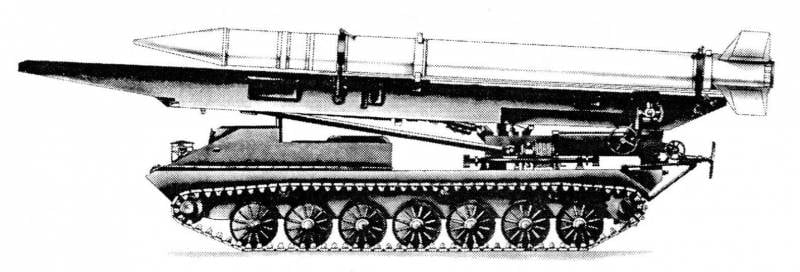
Tracked self-propelled launcher Br-237 / 9П112. Figure Shirokorad AB "Domestic mortars and rocket artillery"
Weapon complex "Luna-M" was supposed to be a solid single-stage unguided ballistic missile 9М21. The project proposed the use of a unified rocket unit, to which the head units with combat equipment of several types could be docked. Unlike the missiles of the previous complexes, products with different types of warheads were considered modifications of the base rocket and were given corresponding designations.
The early modifications 9М21 rockets had a length of 8,96 m with a case diameter of 544 mm and a span of the stabilizer 1,7 m. A cylindrical body of large elongation with a conical head fairing and an X-shaped tail stabilizer was used. The rocket was divided into three main parts: the head with the warhead, the engine compartment of rotation, and the main engine. It was also envisaged the use of a starting engine, discharged after the departure from the guide.
All rocket engines used solid fuel with a total weight of 1080 kg. With the help of the starting engine, it was proposed to carry out the initial acceleration of the rocket, after which the sustainer was engaged. In addition, immediately after the descent from the guide, the rotation engine was turned on, the task of which was to spin the product around its axis. This engine had a central cylindrical combustion chamber and four exhaust pipes placed on the housing at an angle to the axis of the product. After the rotation of the engine fuel, stabilization was carried out using tail stabilizers.
For the 9М21 rocket, several types of warheads with various types of equipment were developed. Continuing the development of ideas embodied in previous projects, the authors of the project created modifications of the rocket with the designations 9М21Б and 9М21Б1, equipped with nuclear warheads. It was proposed to undermine the explosion at a given height using a radio altimeter. The power of the explosion reached 250 kt.
The 9М21Ф rocket received a high-explosive-cumulative warhead with a 200-kg charge. Such a product made it possible to hit the enemy's manpower and equipment with a shock wave and splinters. In addition, the cumulative jet could pierce concrete fortifications. The 9M21F rocket received a high-explosive fragmentation warhead, and the 9M21K was carrying cluster equipment with fragmentation submunitions. There was an 42 element with 1,7 kg of explosive in each.
Agitation, chemical and several training combat units were also developed. For storage and transportation, the head parts of 9М21 missiles of all modifications were completed with special containers. In addition, special combat units after loading the rocket on the launcher had to be closed with special covers with a temperature control system.
Depending on the type of the head part, the length of the rocket could increase to 9,4 m. The mass of ammunition varied from 2432 to 2486 kg. The weight of the head parts ranged from 420 to 457 kg. The existing solid-fuel engine allowed the rocket to reach speeds of up to 1200 m / s, depending on the starting weight and the type of the warhead. The minimum shooting distance with such flight parameters was 12 km, the maximum - 65 km. QUO at the maximum range reached 2 km.
By the end of the sixties, during the development of the Luna-M complex, the 9М21-1 rocket was created. It differed a different body design with less weight. In addition, several other features have been improved. Despite all the changes, the product retained full compatibility with existing warheads.
Extensive experience in creating unguided missiles allowed NII-1 to complete the design of the main components of a promising complex in just a few months. Already in December 1961, the first launch of a prototype of the 9М21 rocket with a weight simulator of a warhead took place. In these tests, due to the lack of the required technology, a stationary launcher was used. Self-propelled machinery with the required equipment appeared only in the 1964 year, when it passed its first tests. According to the results of the first inspections, it was decided to abandon the further development of the tracked armored vehicle in favor of the wheeled 9P113. In addition, the tests led to the approval of the project 9K53 with the subsequent acceptance of such equipment in trial operation.
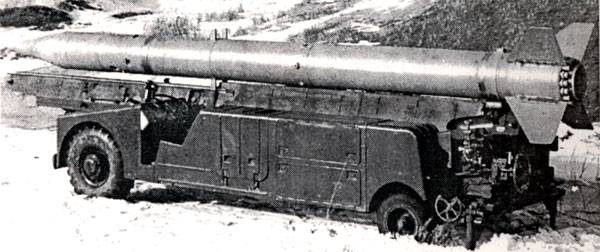
Self-propelled launcher 9P114, developed for the complex 9K53 "Luna-MV". Photo Militaryrussia.ru
The absence of serious problems during the tests allowed us to quickly complete all the necessary checks. In 1964, the newest tactical missile system 9K52 "Luna-M" was recommended for use, and soon this recommendation was consolidated by official order. Soon the mass production of complexes was launched, to which several different enterprises were attracted. For example, the ZIL-135LM chassis produced the Bryansk Automobile Plant, and the special equipment was made by the Barrikady enterprise. The latter also carried out the final assembly of self-propelled vehicles.
The organizational structure of the units, armed with new type of complexes, was defined as follows. Two launchers 9P113 and one transport machine 9Т29 boiled down to a battery. Two batteries made up the division. In different periods of operation, the batteries of the Luna-M complexes were distributed between tank and motorized rifle divisions. Interestingly, in the early stages of operation, rocket troops lacked transport vehicles. Because of this, rockets were transported on existing semi-trailers created for the previous complexes.
In 1966, the Council of Ministers decision appeared, in accordance with which the development of the 9K52М Luna-3 project was started. The main objective of this project was to improve the accuracy of shooting. The fulfillment of the task was to be carried out with the help of special deflectable aerodynamic plates. According to calculations, such equipment made it possible to bring the QUO to 500 m. In addition, by increasing the stock of fuel and some other systems, it was proposed to bring the firing range to 75 km. Some changes to the rocket design, in comparison with the base 9М21, have led to the need to upgrade the launcher. The result of this work was the appearance of the 9P113М combat vehicle, capable of using missiles of all existing types.
In 1968, the testing of the renewed Luna-3 complex began. Almost 50 new missile launches were carried out, which did not show the required accuracy characteristics. In some cases, the deviation from the target exceeded several kilometers. According to the test results, the further development of the 9K52М Luna-3 complex was discontinued. At the same time, work began on promising systems with guided missiles. In the future, this led to the emergence of the Tochka complex, which uses missiles with a complete guidance system based on inertial equipment.
In 1968, the Soviet industry mastered the production of a modification of the missile complex intended for deliveries to foreign countries. The 9K52TS complex (“tropical, dry”) had some differences related to the intended operating conditions. In addition, he could not use 9М21 missiles with special combat units. Only high-explosive fragmentation warheads were allowed for sale abroad.
The serial production of Luna-M tactical missile systems began in 1964 and lasted until 1972. According to domestic sources, a total of troops received about 500 self-propelled launchers and a corresponding number of transport vehicles. According to foreign data, by the mid-eighties (that is, a decade and a half after the completion of production), the Soviet Union had 750 launchers 9P113. Probably, foreign assessments were noticeably overestimated for one reason or another.
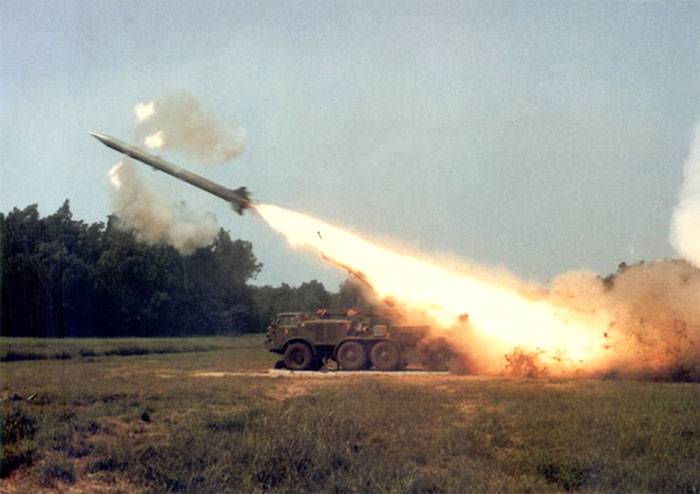
The launch of the rocket 9М21. Photo Militaryrussia.ru
Not earlier than the beginning of the seventies, Luna-M missile systems began to be delivered to foreign customers. For a long time, similar equipment in various quantities was transferred to Algeria, Afghanistan, Yemen, North Korea, Egypt, Iraq, Poland, Romania and other friendly states. In most cases, deliveries did not exceed 15-20 machines, but some contracts involved the delivery of a larger number of equipment. For example, Libya had up to 48 launchers of the 9K52TS complex, and Poland had 52 machines.
For several decades of operation, missile systems of some states took part in various military operations. Interestingly, Soviet rocket forces and artillery used only one 9М21 rocket in a combat situation - in 1988 in Afghanistan. The use of rockets by other armies was noticeably larger, but a limited number of vehicles did not allow for any outstanding results.
Due to complete moral obsolescence, tactical missile systems with unguided weapons are gradually being decommissioned. For example, by the beginning of the current decade, no more than 16 launchers "Luna-M" remained in the Russian armed forces. Some other countries, primarily European ones, have by now completely abandoned obsolete weapons and have written off them as superfluous. Now the main operators of such technology remain countries that are unable to fully re-equip their rocket forces.
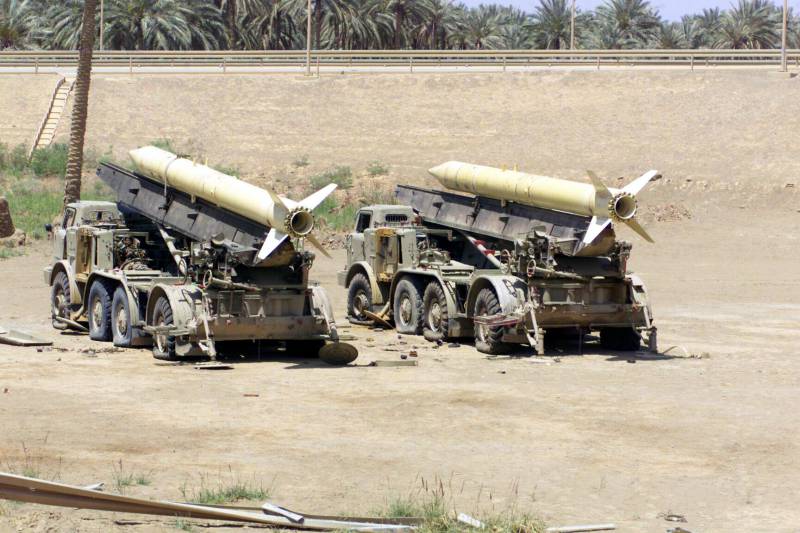
Iraqi machines 9P113 complex 9K52TS, abandoned during the retreat. 24 April 2003 g. Photo by Wikimedia Commons
Already in the second half of the seventies, Soviet missile forces and artillery began to master the latest operational-tactical missile systems "Tochka", equipped with guided weapons. Such equipment had great advantages over all previously developed systems, because of which their further operation had no meaning. The Soviet Union began rearmament, gradually abandoning unguided missile systems. Tactical missile system 9K52 "Luna-M" was the last domestic production system of this class, using unguided missiles. In addition, he stayed in stories as the most massive of such a complex, as well as the most successful model of equipment in terms of export volumes.
Even without taking into account the mass production, export performance and duration of service, the Luna-M complex can be considered the most successful domestic development of its class. Having gained considerable experience in the creation of unguided rockets with a range of up to several tens of kilometers, as well as self-propelled vehicles for their use, Soviet designers were able to obtain the highest possible characteristics. However, further attempts to improve equipment and weapons did not yield the expected results, which led to the start of work on guided missiles. However, after the start of deliveries of new systems, the 9K52 "Luna-M" systems retained their place in the military and helped maintain combat capability at the required level.
Based on:
http://rbase.new-factoria.ru/
http://kap-yar.ru/
https://drive2.ru/
http://militaryrussia.ru/blog/topic-192.html
Shirokorad A.B. Atomic ram of the twentieth century. - M., Veche, 2005.
Shirokorad A.B. Domestic mortars and rocket artillery. - Mn., Harvest, 2000.
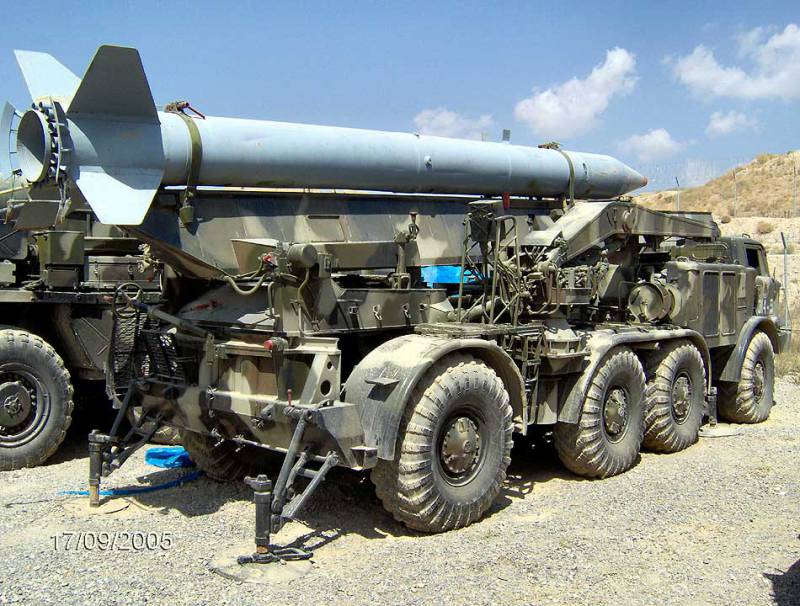
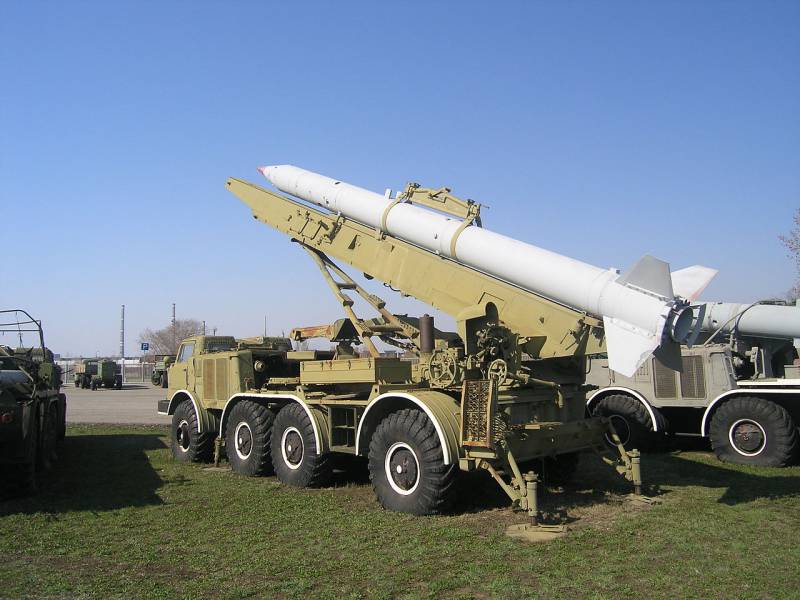
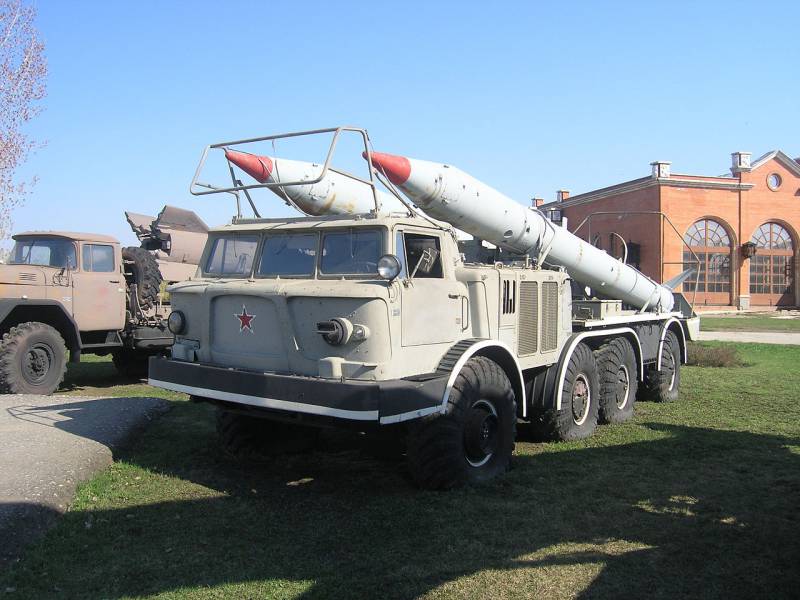
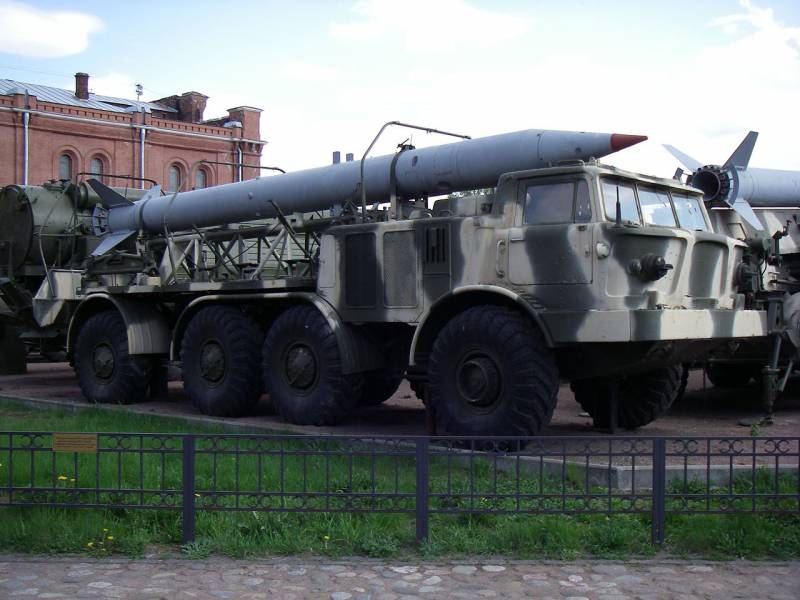
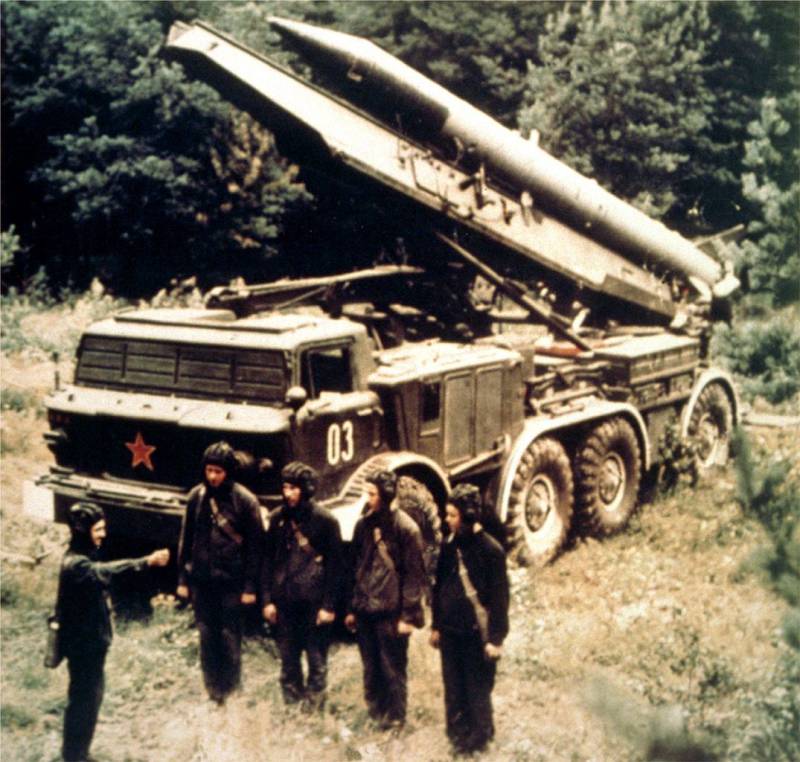
Information